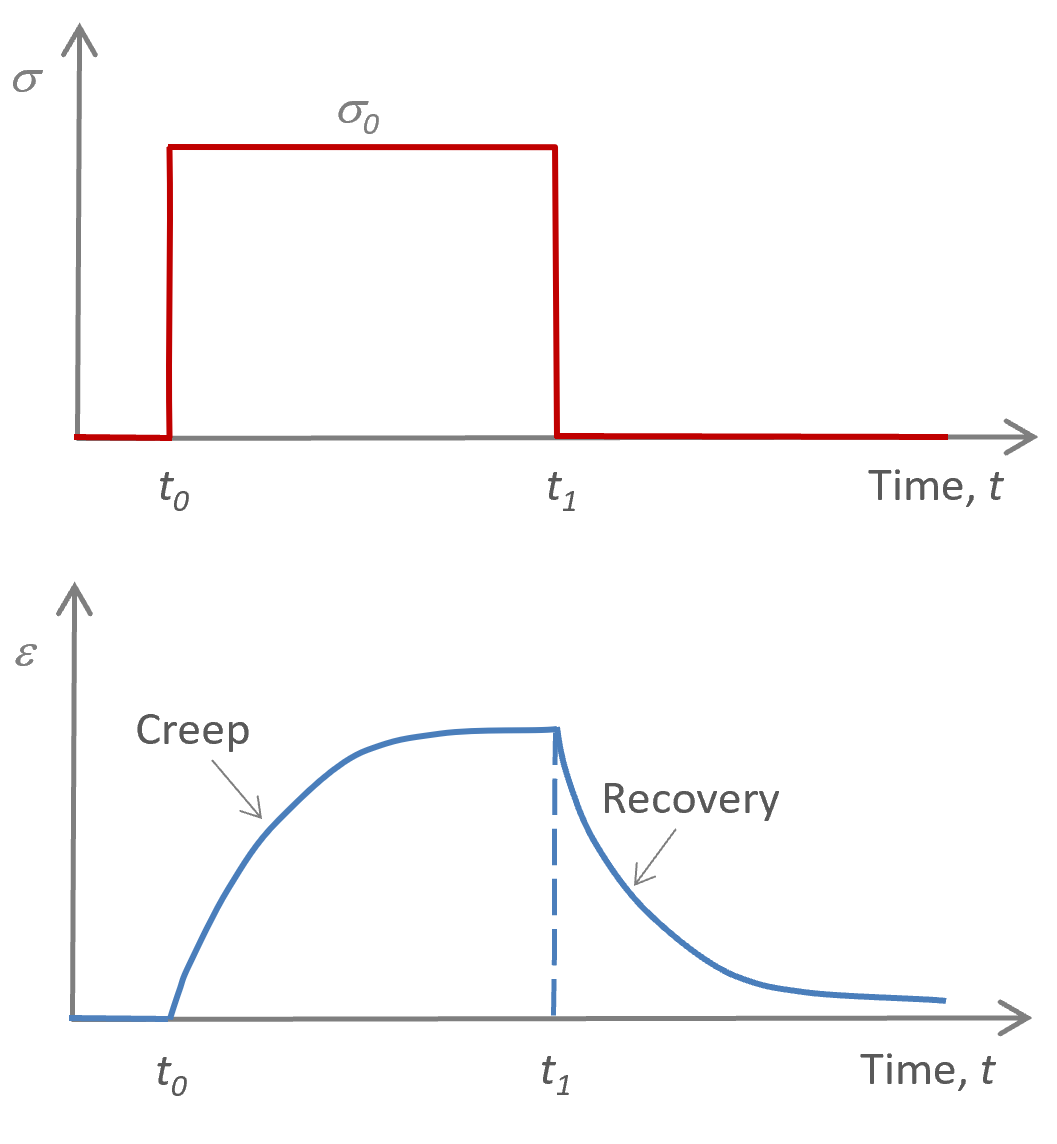Creep Recovery of Polymers
When viscoelastic materials such as polymers are subjected to stress they undergo deformations by molecular rearrangements and by viscoelastic flow. To study the irreversible deformations, creep recovery experiment are often conducted at various loads and temperatures. In these experiments, a specimen is subjected to an instantaneous load for a time t1. After removal of the applied load (stress), the strain recovery is recorded as a function of time.
Creep & Recovery

In the case of an ideal elastic material (fully crosslinked elastomer), the creep recovery can be described with the one-dimensional Voigt model. The basic equation for the time dependence of strain during creep recovery is
0 = E · ε + η · dε / dt
or
0 = λ(T) · dε / dt + ε
where λ(T) is the response or relaxation time of the one-dimensional Voigt element which is represented by the ratio of viscosity η to Young's modulus E. Separation of the variables and integration yields
ε(t > t1) = ε(t1) · exp[-(t - t1) / λ(T)]
Notice that the strain is completely reversed during the creep recovery phase, or in other words, no irreversible deformation occurs. This behavior is typical for crosslinked elastomers when the stress during the deformation phase does not exceed the elastic limit.
Plastic materials, on the other hand, undergo irreversible deformation when exposed to stress. This situation can be best described with the one-dimensional Maxwell model. If a constant stress σ0 is applied for a time intervall t1, then the Maxwell element reaches following strain:
ε(t1) = σ0 {1 / E + t1 / η}
After the stress is removed, the spring of the Maxwell element recovers instantaneously. The remaining deformation is given by
ε(t) = ε(t1) - σ0 / E = σ0 t1 / η
There is no time dependent creep recovery because setting σ = 0 in the Maxwell equation yields
η dε / dt = 0
This behavior is typical for amorphous polymers without chemical crosslinks which exhibit viscous flow (chain slippage) when exposed to stress.
References & Further Readings
- A.D. Drozdov, Viscoelastic Structures. Academic Press, New York, 1998
- L.H. Sperling, Introduction to Physical Polymer Science, New York, 1992
- Robert O. Ebewele, Polymer Science and Technology, CRC Press, Boca Raton, Florida 2000
- F. Mainardi and G. Spada, Eur. Phys. J., Spec. Topics, 193(1), pp 133-160 (2011)
- D. Roylance, Engineering Viscoelasticity, Dept. Mat. Sci. & Engrg., MIT, 2001
- W.N. Findley, J.S. Lai, & K. Onaran, Creep and Relaxation of Nonlinear Viscoelastic Materials, Dover, New York, 1989